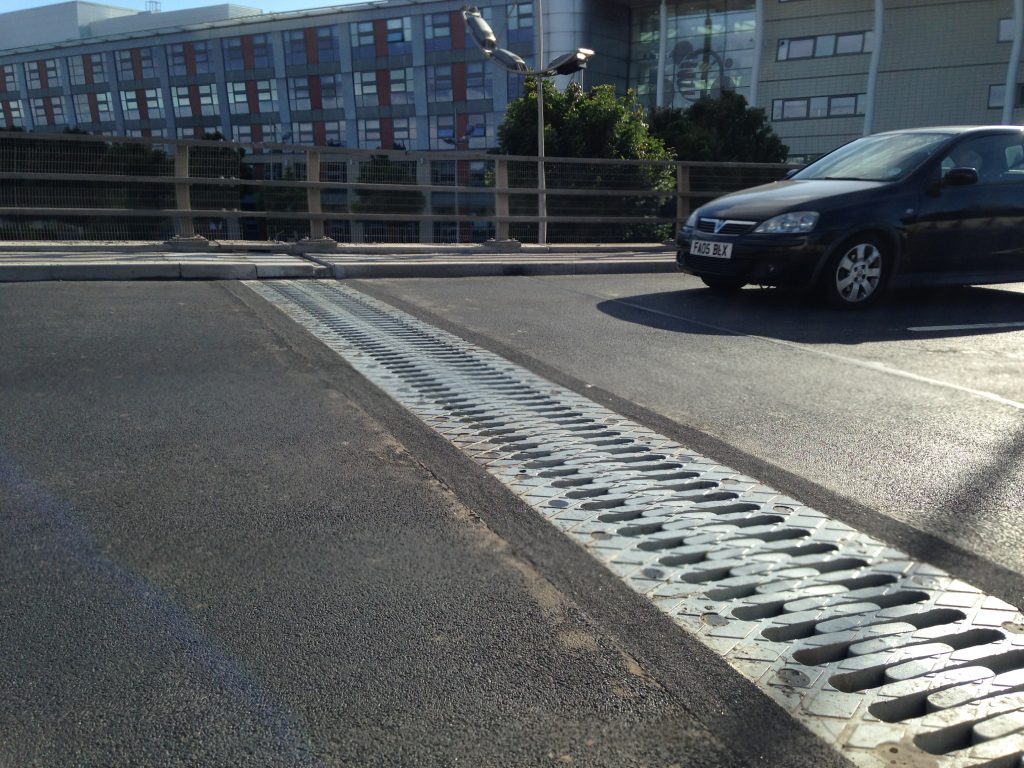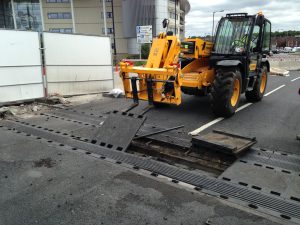Designed to span gaps between structural elements, expansion joints are necessary to absorb movement, accommodate shrinkage and creep effects and changes in temperature on reinforced concrete, pre-stressed concrete and steel structures, and particularly on bridge decks.
The expansion joint is the element under the most strain in any engineering structure. Many of the joints that were installed on bridges in the UK over 40 years ago are now at the end of their life, as a result of fatigue, corrosion or structural movement.
 What are expansion joints and why do we need them?
What are expansion joints and why do we need them?
On a typical car journey from London to Manchester, you will pass over more than 500 bridges. Each one of these structures, crucial to a highway’s infrastructure, is continuously affected by vehicle load, wind conditions and temperature. We can consider these bridges as ‘living’, moving structures, continually exposed to these external forces, which contribute to its life span.
When designing any structure, an engineer takes these external forces and effects into account, ensuring the bridge has both bridge bearings to allow movement and defined restraint at its support, and also expansion joints strategically placed to allow traffic to pass over movement gaps.
Apart from live load rotations, the design of the joint is affected most by temperature. To calculate movement capacity due to thermal effects, it is calculated for most structures using the value of 12 x 106 mm per oC (EN1993-1-1).
The specification and selection of expansion joints
When designing a new structure, the engineer will take into account how it will react to external factors. A specification is arrived at and then passed to a joint manufacturer, who will establish the best expansion joint to suit the application. It is important to use a specialist manufacturer that can offer a wide range of joints to find the ideal solution to match the requirements of the structure and the client.
To enable this process the information needed by the joint specialist is shown in the table below. Whole life and service life is a key consideration for the manufacturer (and of course the end client).
What defines how we choose a movement joint?
When considering the selection of expansion joints, it is important to consider the material, the type of fixity of the joint and the structure it is to be fitted to if it needs replacing in the future.
Importantly, when we come to replace a joint in the future, the joint gap can dictate the type of joint required!
Typically bridges of concrete construction suffer from shrinkage effects which means the gap, as built, does not always reflect the needs of the structure at the time of replacement.
Interestingly, large surface mounted movement joints rely on the adjacent surface or nosing material for fixing. As the joint gap becomes larger than 65mm, (BD33/94) the reaction on the edge rail increases which can result, under traffic loading in detachment or break up of the adjacent surfacing.
 Where rubber joints are utilized, fixity can be achieved by drilling and fixing using chemical anchors. With this method, the substructure should always be considered and if necessary pull out tests should be applied to ensure suitability and strength of interfaces.
Where rubber joints are utilized, fixity can be achieved by drilling and fixing using chemical anchors. With this method, the substructure should always be considered and if necessary pull out tests should be applied to ensure suitability and strength of interfaces.
When selecting a joint, careful consideration of vertical differential movements must be given, especially when considering rubber mat type expansion joints. Differences in levels across the joint can lead to reductions in lifespan where the rubber is deflected by traffic passing over it, creating a ‘pounding’ effect on the supporting grout below. Many rubber type expansion joints are considered to have a lower life expectancy when placed in breaking zones or high traffic areas as a result.
Case study – Doncaster St Georges Bridge – joint replacement
St George’s Bridge in Doncaster was constructed in 2001, with rubber mat type expansion joints to give 350mm of movement. The A19 bridge is the northern gateway in and out of the town and caters for 44,000 vehicle movements a day. After 10 years, the mats had become worn, loose and required regular maintenance, indicating that they were reaching the end of their lifespan.
The existing rubber mat joints were replaced in 2015 with a cantilever finger (or comb) joint, which has no wearing parts and a proven whole life of around 40 years – the gap and offset in the structure was considered and the design of the joint tailored to the site conditions.
The new joint was fixed to the deck in recesses created using hydro-demolition, which required increased capital investment at year one, but increased its overall longevity, resulting in lower lifetime costs.
The finger joint used is smaller in plan area than the rubber mat joint it replaced, which reduces the possibility of skidding/slipping in adjacent breaking areas. Notwithstanding this, where cyclist routes exist, cycle plates should be fitted.
In summary, careful consideration of joint type to meet the requirements of local traffic conditions and the needs of the structure can result in whole life solutions that increase the life of structures new and old. As a bridge expansion joint specialist, Freyssinet is able to offer a full range of products, an inspection and design service to establish the correct type of joint for your structure and provide expert installation. Call (01952) 201901 for more information.
Matthew Dronfield
Freyssinet Head of Repairs Matthew Dronfield has over 30 years’ experience in the industry. He heads up a team of dedicated engineers providing solutions for new and replacements joints in the UK and Ireland. Freyssinet is fortunate that the wide range of solutions manufactured ‘in group’ can be used to find the ideal solution to match expenditure and whole life expectancy.


